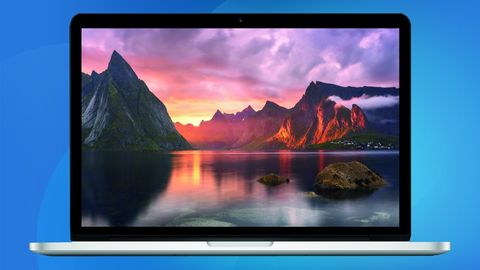Why you can trust TechRadar
The 13-inch MacBook Pro features the same iconic aluminum unibody design as previous MacBooks. If you were to place it side-by-side with last year's model, you wouldn't be able to tell the two apart.
At 1.57kg (3.46 pounds), it also weighs the same. That's 14% heavier than the 13-inch MacBook Air's 1.35kg (2.97 pounds), which despite not seeming like a huge amount makes quite a difference when picking up it up with a single hand or carrying it in a backpack.
That's partly owed to the Retina MacBook Pro's design which, instead of tapering to a narrow edge like the Air, is evenly distributed, giving it a more square-like appearance.
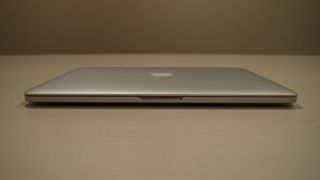
As usual, build quality is second to none, with no detectable flex wherever you choose to prod and poke at it. The lid is similarly sturdy with very little wobble once raised into position and can be easily opened with a single finger, thanks to the hollow lip along the front edge.
The MacBook Pro features the same glossy, glass-covered In-Plane Switching (IPS) screen as the previous generation, and it's still gorgeous to look at, making for deep blacks and vibrant color tones that pop.
Not only is the display more attractive than the comparatively washed-out TN panels found on the Apple's MacBook Air range, it also possesses the better viewing angles of the two, viewable from around 178 degrees.
Surrounding the display is a fingerprint-attracting black bezel measuring 1.5cm (left and right) and 2.5cm (top and bottom), with a 720p HD webcam embedded along the top.
Sharp shooter
Its native 2560 x 1600 pixel-resolution provides a 227 pixels-per-inch (ppi) ratio, rendering UI elements and icons incredibly sharp. It means you can see more of high-resolution images, with far greater clarity than a regular 1080p display. Fonts too are more legible - particularly serif ones - which makes reading web content easier on the eyes.
Apple lets you flick between four default pixel resolutions in the Systems Preferences panel to choose between a sharper image or more desktop real-estate. They are: 1024 x 768, 1280 x 800, 1440 x 900 and 1680 x 1050. Each option doubles the pixel count using OS X's Hi-DPI mode to achieve a "Retina"-like quality.
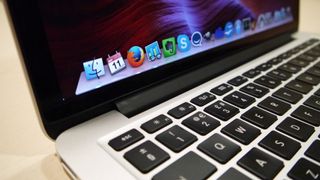
Using an app such as SwitchResX, you can set the resolution even higher to show even more of the desktop, something Apple likely decided against as it makes text much harder to read with cramped menus at higher resolutions.
Nontheless, there's something truly satisfying about using the desktop at 1920 x 1200 or 2048 x 1280, which allows you to see all of the cells on spreadsheets, edit large images without scrolling and snap apps to the sides of the screen (using an app such as Hyperdock).
There is an ever so slight impact on performance that's noticable when using heavy duty imaging applications, or using 10 or more apps at once, with the occasional stutter or second of lag, but it's far from a big deal.
Connectivity
Connectivity on the machine is fine, with a MagSafe 2 adapter, two Thunderbolt 2 ports that support up to 20Gbps transfer speeds, a USB 3.0 port, headphone jack and dual mics along the left-hand edge.
Intel's Thunderbolt 2 standard is compatible with an increasing array of devices and the MacBook Pro allows you to daisy chain up to six of them.
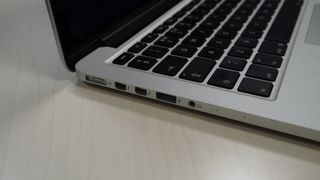
On the machine's right-hande side is an SXC card slot, HDMI port and one USB 3.0 port. There are no FireWire 800 or Ethernet ports, but if you need these protocols, you can get adapters that fit the Thunderbolt 2 ports - though depending on the interface there may be limitations on the speeds that they can operate.
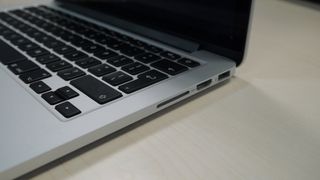
It's worth noting that, while the machine isn't compatible with Apple's older MagSafe 1 charger, you can pick up a MagSafe 1 to MagSafe 2 convertor from Apple for £9 (around $6, or AUS$11), which would effectively get you a cheap spare charger.
Apple moved to 802.11ac Wi-Fi for last year's 2013 refresh and has been kept for this year's machines. Wireless connectivity is once again dependable while allowing for speedy download rates, which will be faster when used in conjunction with an AC-enabled router.
